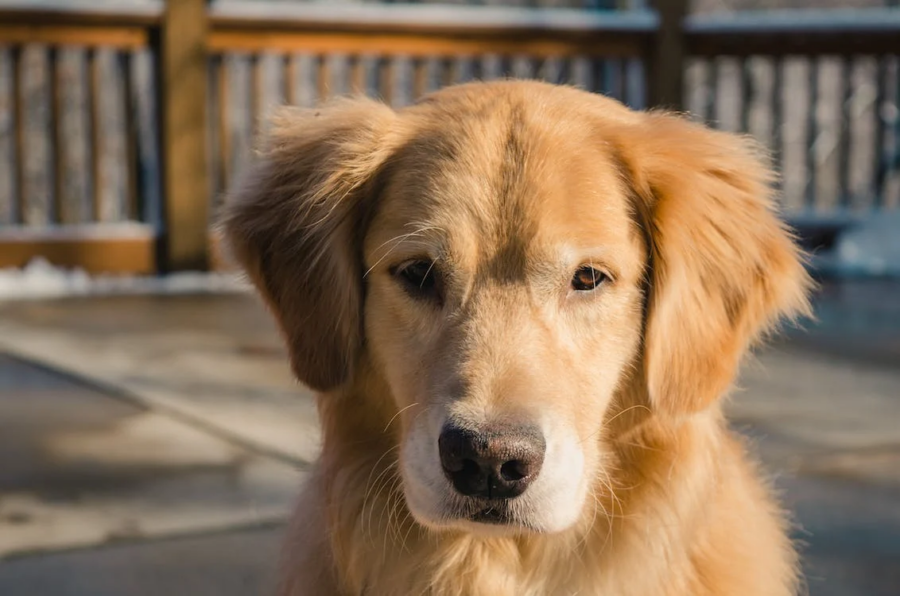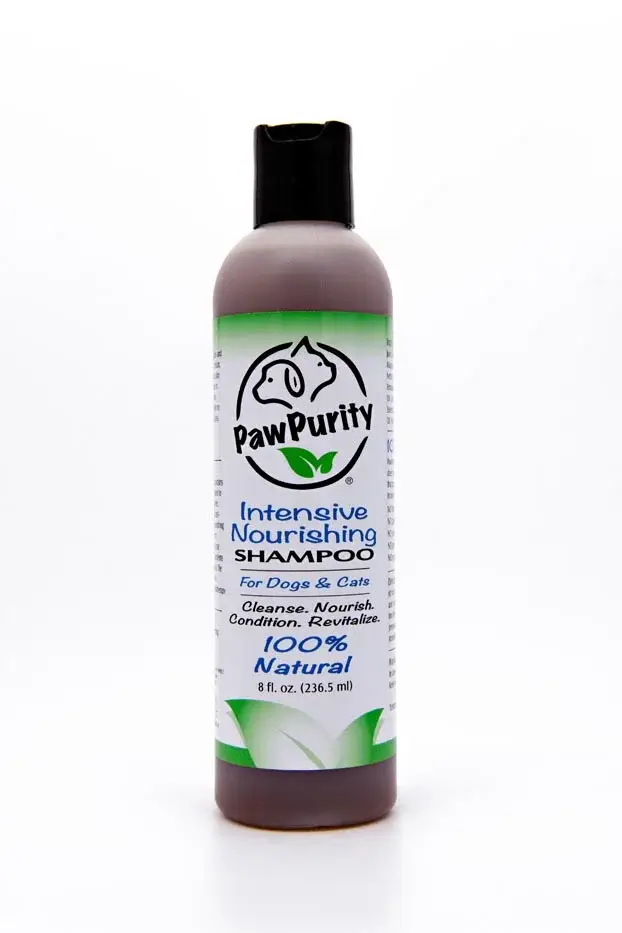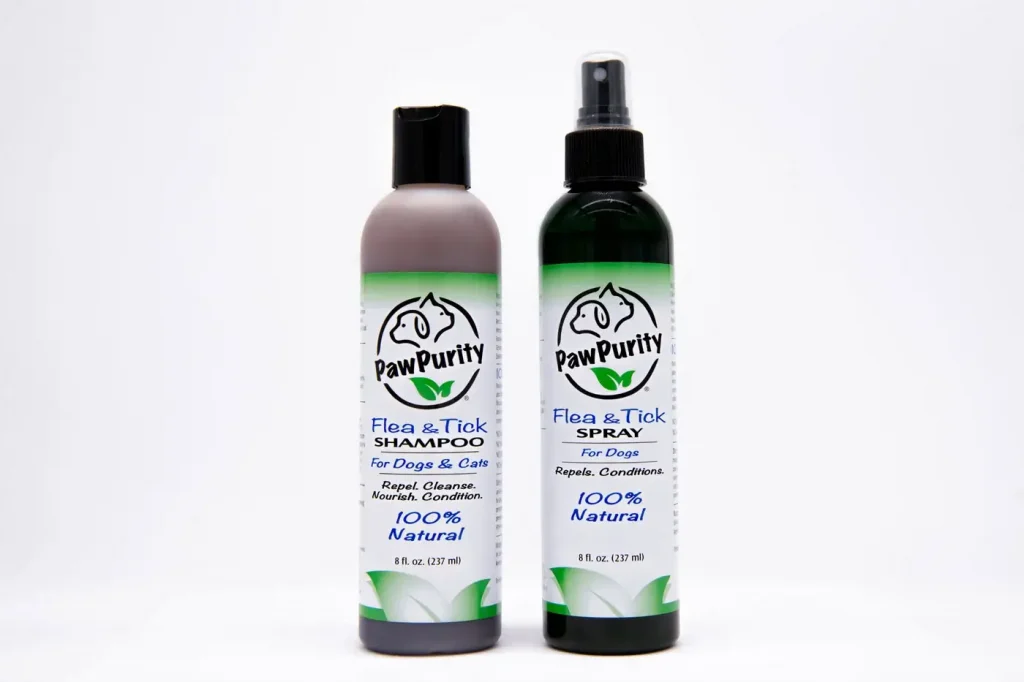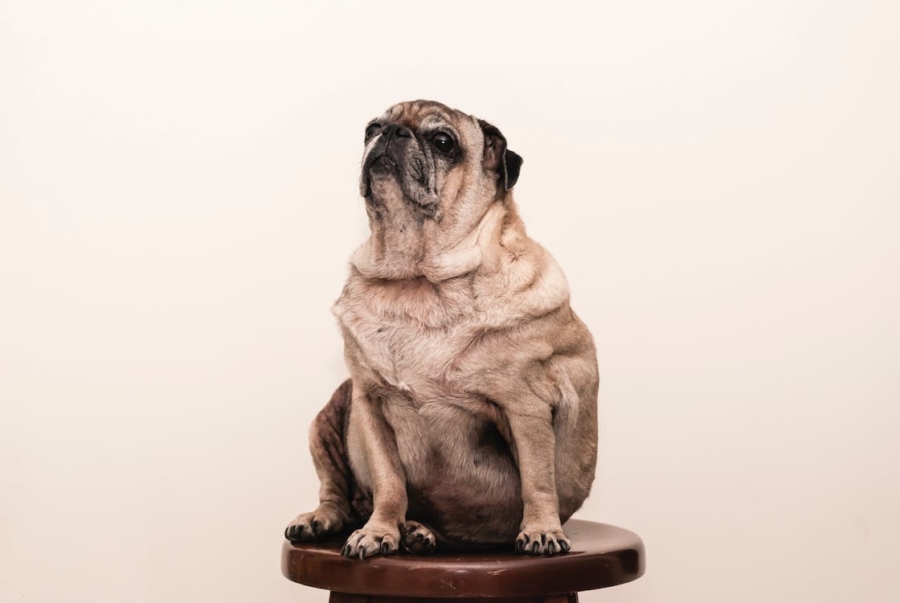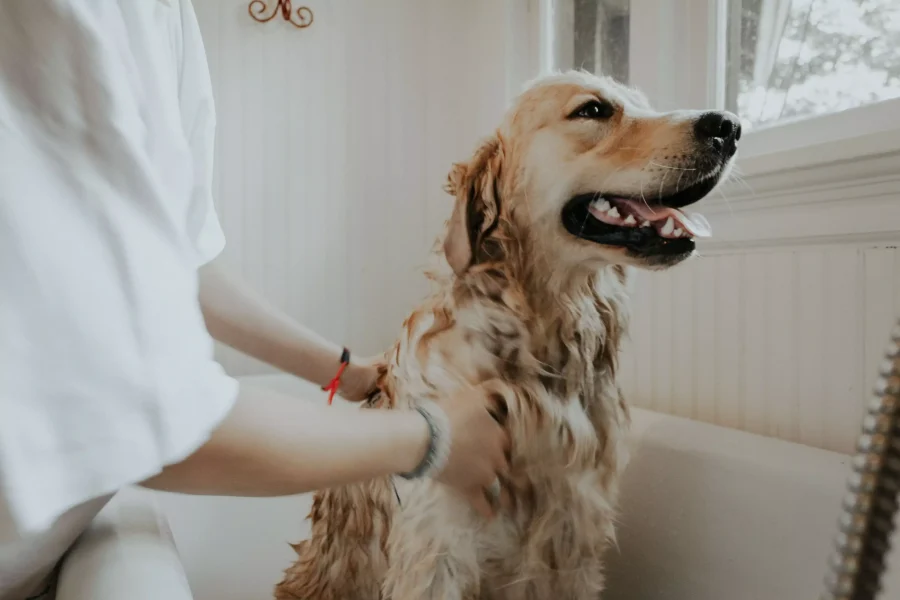Hot spots, also known as acute moist dermatitis, are painful and itchy skin lesions that commonly affect dogs. They can be caused by any number of things, ranging from allergies to insect bites or even skin infections. If your dog is showing signs of hot spots, it’s important to know what they are, what causes them, how to treat them, and how to prevent them in the future. Let’s take a closer look at hot spots on dogs.
What are Hot Spots?
Hot spots are areas of inflamed skin that often appear red and irritated. They may start out as small patches of redness but can quickly become more significant if left untreated. The areas will usually be moist and sometimes even weepy with pus. Hot spots can be extremely painful for your dog and cause intense itching that may lead to further irritation if scratched or licked excessively.
What Causes Hot Spots in Dogs?
There are several potential causes for hot spots in dogs. A few of them are mentioned below:
1. Environmental Factors
Dogs that spend a lot of time in warm and humid environments, such as those with a history of swimming or living in a humid climate, are more likely to develop hot spots. This is because the moisture on their skin can promote the growth of bacteria and fungi, which can cause the skin to become infected and inflamed.
2. Allergies
Dogs can be allergic to a variety of substances, including pollen, dust mites, shampoos, and certain types of food. Allergic reactions can cause the skin to become inflamed and itchy, which can lead to excessive scratching and biting. This can cause hot spots to develop to the point of becoming a serious problem.
3. Infections
If a dog has an existing skin infection, such as mange or ringworm, it can weaken the skin’s natural defenses and make it more vulnerable to hot spots. Additionally, bacteria can enter the skin through a wound or scratch, which can also cause hot spots to develop.
4. Poor Grooming and Nutrition
Poor grooming habits such as infrequent bathing may allow dirt and debris to build up on the skin surface leading to inflammation and secondary infection resulting in hot spot formation. Dogs with long fur are more prone to developing this condition due to decreased air circulation, which makes it difficult for sweat to evaporate from their bodies. Poor nutrition can also contribute to the development of hot spots as it leads to a weakened immune system and unhealthy coat condition.
5. Bacterias and Parasites
Infections such as bacterial or fungal infections can also cause hot spots on a dog’s body. Bacterial skin infections like Staphylococcus intermedius tend to be the most common cause of these lesions. Other infectious agents, such as Demodex mites, may trigger an allergic reaction leading to the formation of hot spots. In some cases, parasites like flea bites may increase the risk of this skin problem.
6. Orthopedic Problems
Orthopedic problems like elbow dysplasia and hip dysplasia can cause chronic irritation that leads to increased scratching, which then causes hot spots.
7. Ear Infections
Ear infections caused by bacteria or fungi can make a pet scratch too much. This scratching can cause sores on other parts of the body, even if the infection started in the ears.
8. Anal Inflammation
Sometimes, a dog’s bottom can get red, itchy, and sore. This might be caused by an illness, like colitis or diarrhea. If a dog scratches or bites the sore area too much, it can cause more irritation and even create hot spots on the skin. A vet can give medicine to help make the soreness go away.
9. Boredom
Lastly, boredom may also be a factor in cases where there is excessive licking or biting at one particular area that leads to ulcerations forming on the skin surface, known as acral lick dermatitis (ALD).
Hot spots can occur anywhere on a dog’s body, but they are most commonly found on the head, neck, and hips. They can also spread quickly and become very painful, so it’s important to identify and treat them as soon as possible.
How to Treat Hot Spots in Dogs
Hot spots in dog treatment typically include antibiotics to fight any underlying infections and topical creams to reduce inflammation and help soothe the irritation. Keeping the area clean and dry while treating it is also important. Thus, it is best that you use PawPurity Organic Shampoo for dogs regularly, followed by thorough drying using towels and a blow dryer set on low heat.
There are several treatment options available for hot spots, including:
1. Cleaning and Shaving the Affected Area:
The first step in treating a hot spot is to clean and shave the affected area. This helps to remove any debris, bacteria, or hair that may be contributing to the problem. The hair around the hot spot is shaved to prevent further irritation and to allow air to reach the affected area, which helps to speed up the healing process.
2. Medications:
There are several types of medications that can be used to treat hot spots in dogs, including topical treatments and oral medications.
- Topical treatments: These include creams, sprays, and ointments that are applied directly to the affected area. Topical treatments may contain antibiotics, corticosteroids, or antifungal agents, depending on the underlying cause of the hot spot.
- Oral medications: In some cases, oral medications may be prescribed to help manage hot spots. These may include antibiotics or safe antihistamines, depending on the underlying cause of the hot spot.
3. Natural Remedies:
Some dog owners prefer to use natural remedies to treat hot spots. These may include using shampoos with aloe vera gel and an assortment of carefully selected herbs such as nettle, horsetail, and calendula. Please note that there are many herbs that should never be applied to a dog with open sores such as Burdock. You can also use Elizabethan or e-collar to prevent excessive scratching for some time, but this often is a temporary fix and does not address the cause.
4. Seeking Veterinary Help:
If your dog has a hot spot, try using an all-natural shampoo with ingredients designed to prevent fungus and provide antiseptic and antibiotic properties. If the condition does not improve, a visit to the vet may be your best bet in determining the underlying cause of the hot spot and recommending the most appropriate treatment. They may also prescribe medications to help manage pain and discomfort.
With proper care and treatment, most hot spots can be managed effectively, and your dog can return to their happy, healthy self.
How Can I Prevent Hot Spots from Happening Again?
Prevention is key when it comes to hot spots. Make sure you keep up with regular brushing and grooming of your pet’s coat in order to remove dirt, debris, dead skin cells, dander, etc., which could potentially cause an allergic reaction or infection in your dog’s delicate skin. Additionally, make sure you are using PawPurity Flea Prevention regularly if needed, as fleas can also trigger hot spot flare-ups.
Any suspicious bumps or lesions should always be checked out by a veterinarian right away, just in case. It’s always better to be safe than sorry when it comes to your furry family member.
Frequently Asked Questions
1. Can hot spots kill a dog?
Hot spots in dogs are usually not life-threatening if treated promptly and effectively. However, if left untreated, hot spots can become infected and lead to more serious health issues. Untreated hotspots can lead to the development of secondary bacterial infections, which can be more difficult to treat and may require more aggressive interventions. In severe cases, these infections can spread to other parts of the body, leading to systemic infections or sepsis, which can be life-threatening.
Therefore, it’s important to take action if your dog has a hot spot or any other skin condition. Early detection and treatment can prevent the hot spot from worsening and help to ensure your dog’s overall health and well-being.
2. Can hot spots in dogs be contagious to humans?
No, hot spots in dogs are not contagious to humans. Hot spots are caused by bacteria and other microorganisms that are specific to dogs and cannot be transmitted to humans. However, if left untreated, hot spots can become infected and may cause your dog to become more aggressive or irritable, which can be dangerous for humans.
3. Are certain breeds more prone to hot spots?
While hot spots can occur in any breed of dog, certain breeds with thick, long coats may be more prone to getting them. These breeds include Golden Retrievers, Labrador Retrievers, and St. Bernards, among others. Owners of these types of dogs should make sure their pets receive professional haircuts during their shedding season and regular baths so their skin stays healthy.
Wrap Up
All in all, hot spots on dogs can range from mild nuisance irritations to serious medical issues depending on the underlying cause. Recognizing the symptoms early on and treating the condition immediately is key to a quick recovery.
Regularly brushing/grooming your pet, along with making sure to use natural flea and tick repellents, is key for preventing these pesky little areas of inflammation from flaring up again down the line. With the help of such preventions, you can make sure that your pet stays away from the irritations and pain that come with hot spots.
#Hotspots #DogsWithHotspots #HotspotsInDogs





